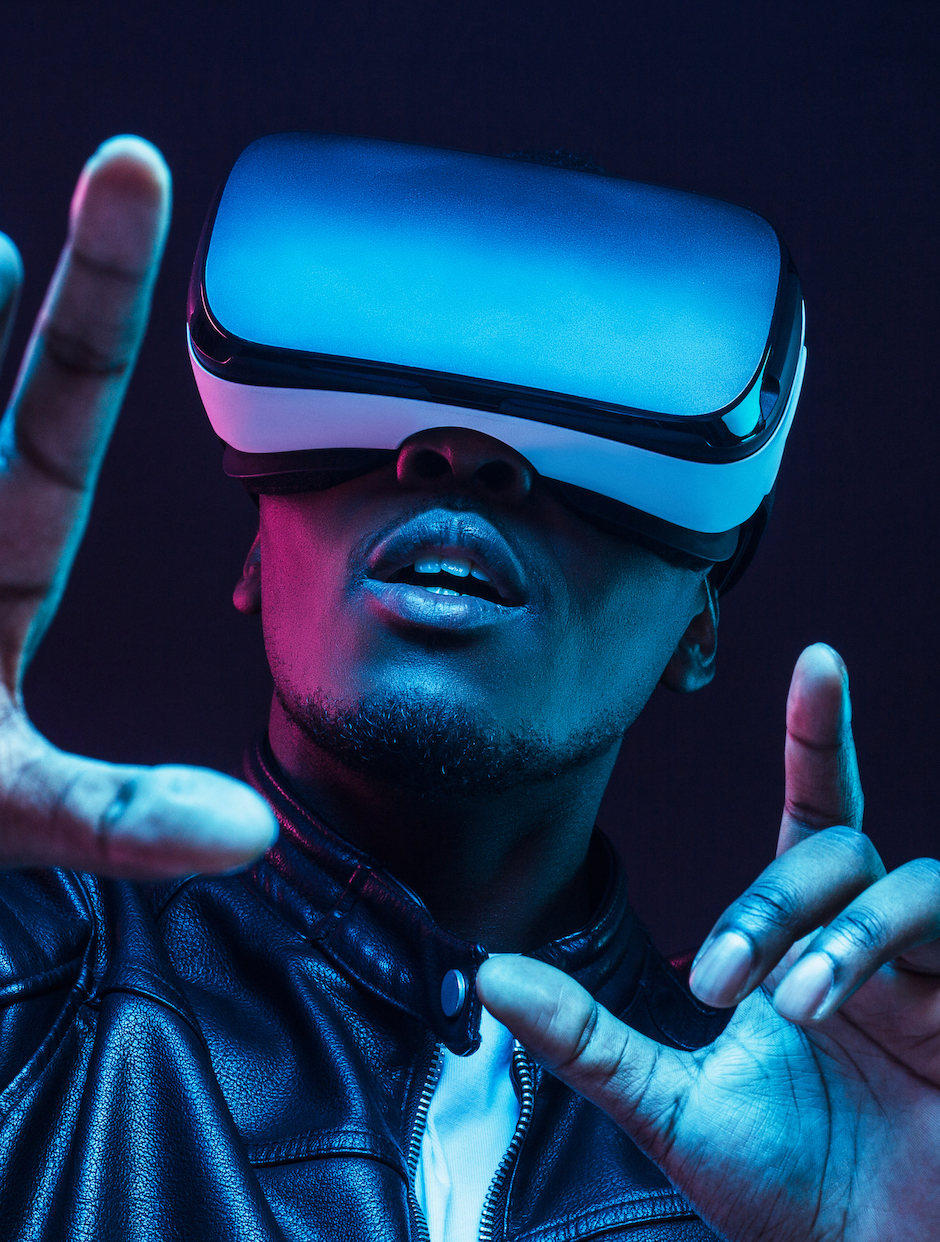Virtual Reality
AI in the New Reality
Immersive experiences created with virtual and augmented reality technologies bring richer and more productive user interactions to gaming, entertainment, education, tourism, retail, and healthcare.

An Immersive Experience
Extended Reality (XR) is an umbrella term encapsulating Augmented Reality (AR), Virtual Reality (VR), Mixed Reality (MR), and everything in between. While each of these simulated realities offers a wide range of revolutionary experiences, all require similar underlying technologies, including Artificial Intelligence (AI). As the demand for richer user experiences and more natural interactions grows, complex neural networks increasingly come into play. Neural networks in XR applications must operate in real-time and require high-performance Neural Processing Units (NPUs).
Run Multiple Neural Networks Concurrently
NPUs used in XR need to perform at tens of TOPS or more. They also must efficiently run multiple Neural Networks (NN) concurrently—something not typically seen in other markets. For example, a small consumer device may run a single NN with a small resolution, but NPUs used in XR need to run multiple networks concurrently at much higher resolutions. Additionally, many OEMs have developed unique custom and proprietary NNs. Consequently, NPUs in XR applications must be able to run multiple and diverse high-resolution networks concurrently.
Reducing AI Power Consumption
in AR/VR/MR Headsets
One of the key performance metrics of any XR device is battery life. Consequently, system designers must balance performance needs with power efficiency. NPUs can consume significant power—that is, if the wrong NPU is chosen. OEMs and chipmakers need NPU architectures that meet the unique requirements of their application. Comparing and understanding the power efficiencies of NPUs can be complicated. We can make it easy—Expedera’s Origin™ IP averages a market-leading 18 TOPS/W. Origin is the industry's most power-efficient NPU per our benchmarks and confirmed by customers and analysts.
Best AI for Immersive Experiences
While many general-purpose NPUs are available, a one-size-fits-all solution is rarely the most efficient, especially for performance- and power-sensitive consumer devices. General-purpose AI processors are often larger and consume more power than necessary. Expedera's E6 IP cores are optimized for XR use cases. The Origin™ E6 provides optimal PPA (power, performance, area) and typically achieves superior performance in about half the silicon area compared to other NPUs. By embedding Expedera Origin NPU IP into XR applications, manufacturers of AR/VR/MR headsets and SoCs/ASICs can reduce latency, increase performance, decrease DRAM requirements, and extend battery life.

An Architecture for Immersive Experience
The Origin neural engine IP uses Expedera’s unique packet-based architecture, which is far more efficient than common layer-based architectures. Enabling better utilization and deterministic performance, Origin IP eliminates the need for hardware-specific optimizations, allowing trained networks to be run unchanged with no reduction in accuracy. This innovative, patented approach increases performance while lowering power and area requirements.
A Seamless User Experience with Zero-Latency Network Switching
An immersive experience relies on running a variety of neural networks at the same time. AI processing must be able to switch between networks without latency or switching penalties. Expedera’s Origin handles up to 8 or more networks concurrently, ensuring a seamless user experience.Happier Customers
The fun stops for VR/MR users when the battery runs out of juice. Long battery life is critical to a positive user experience. Expedera offers chipmakers and OEMs the most power-efficient AI processing, enabling longer battery life and happier customers.
Purpose-Build for Your Application
Customization brings many advantages, including increased performance, lower latency, reduced power consumption, and eliminating dark silicon waste. Expedera works with customers to understand their use case(s), PPA goals, and deployment needs during their design stage. Using this information, we configure Origin IP to create a customized solution that perfectly fits the application.

Download our White Papers
